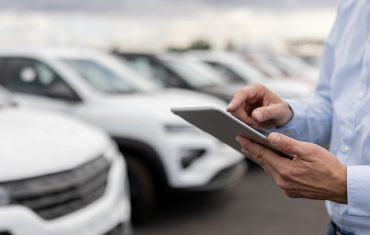
A leased future: will we own anything by 2030?
DriverWhat will life look like in 2030? Think about how digital technology has already changed life. Consider how this has affected your attitude to ownership and you’ll be on your way to discovering the trend to owning less.
Renting from the cloud
Changes to the way we live our lives — and the insights of futurists like Steve Sammartino — point the way forward.
One trend is undeniable: by 2030, we will ‘own’ a lot less.
Let’s think about entertainment for a moment. Apple iTunes and Google Play Stores are part of our daily music and phone use. Streaming services like Netflix and Spotify are how we watch videos and “buy” music. In all these cases we “access” rather than “own” content we want. Video and music stores are becoming rare as we no longer need a physical item to enjoy a movie or album.
Our entertainment comes in digital form via the cloud. We rent access via monthly subscriptions or download fees that give us a few days to enjoy a new movie.
Sustainability & a low emission future
Many of us are looking to live in a more sustainable way. We care where our clothes come from and what they are made out of. We look for environmentally-friendly materials when building a house, workplace or public space. We care about where our food comes from. In short: we care about the adverse effects of our consumption on our environment.
And the principle of sustainability is key when it comes to the transport options we use get around our towns and cities.
There is no doubt that resources will be scarcer by 2030. So, sustainability and making efficient use of resources will have to be an even bigger part of everyone’s lives.
The need to share resources
By 2030 it might be impossible to achieve the today’s standards of material comfort. Even today we are facing challenges that make achieving the mode of living of the past hard to achieve. Communications technology and mobile smart phones make privacy a luxury. The damage we have done to our environment warns us that our attitude to energy must change. The relationship of our incomes to the cost of housing makes home ownership a distant dream for many. Space is becoming a luxury. And the quality of urban living must change to accommodate these realities.
All of which makes it more cost-effective and practical to rent, hire or share rather than own many things.
Technology helps here. It makes the renting and sharing of everything from bikes and cars to movies and music possible. And a “sharing economy” is evolving rapidly.
The Sharing economy
In NZ we share our houses via Airbnb and Bookabach. We rent out our cars and driving skills via Uber and Zoomy. We share rides via Yourdrive and Coseat. Where we might have done our own house maintenance, we HireaHubby. Where we might have looked to banks for loan we now borrow from others with money they’ll rent to us for interest via Harmoney. Where we might have parked in a parking building, private car parks are now available to us via Parkable.
The sharing economy is growing fast. Some of it is hardly new — businesses have been hiring specialist equipment they can’t afford to own for decades. But technology opens up the possibility of sharing your stuff for a profit to just about anyone.
If you can earn a little from an asset you’re not using it makes all sorts of sense and makes that asset available to others. Indeed being able to hire out a campervan via Mighway or a car via Yourdrive could mean that it makes owning a campervan or car possible for you. It also makes access to that asset a possibility for others who might not have had access otherwise.
Sharing lease vehicles & mixed mobility
Vehicle leasing has been more attractive than ownership to business for decades, and increasingly so for private buyers. Vehicle leasing today is traditionally a three to four year agreement where you pay for your use of the car – finance and running costs – for the agreed period, then had the car back. Car as a Service (CaaS) over ownership to reduce costs avoid assuming the risks of owning a depreciating asset.
If ownership becomes even less sustainable as a concept, it would make sense that this CaaS model evolves to allow more flexible access to the car – more what you need when you need it instead of a three year commitment.
This more flexible access to cars will support the concept of mixed mobility that is garnering more and more attention. It’s an approach to getting around urban areas that has already become popular in Europe and the UK.
Mixed mobility adds reimbursement for use of public transport — or ride and car sharing and car subscription services — to employment packages. It makes the sharing economy part of employee remuneration. And it’s not hard to see it as standard by 2030.
If you’re looking to the future, it’ll pay to keep your eye on the sharing economy and how it could benefit your people, especially when it comes to their mobility options. Watch this space…
 Driving Insights
Driving Insights




